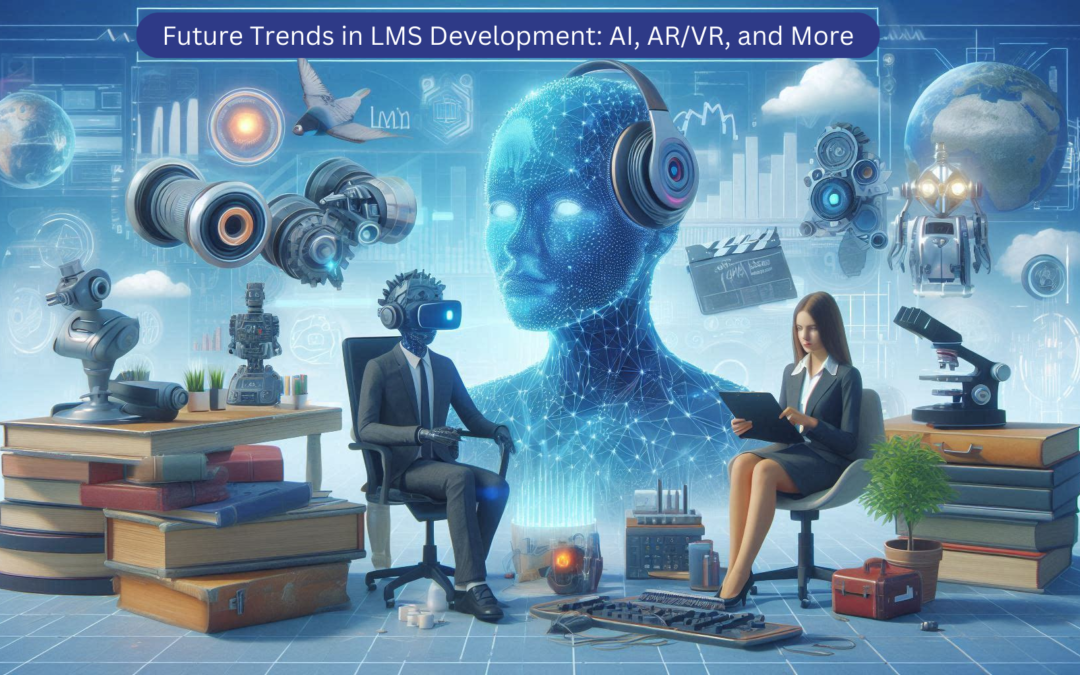If you’ve been tracking the dynamic landscape of Learning Management Systems (LMS), you know it’s evolving at lightning speed. With cutting-edge technology driving change, the future of LMS development is bursting with potential. Today, let’s dive into some of the most thrilling trends on the horizon, including AI, AR/VR, and a few other game-changers poised to revolutionize our learning experiences.
The Rise of AI in Learning
What’s Happening?
Artificial Intelligence (AI) is making waves across various sectors, and education is no exception. In the context of LMS, AI can analyze learner data to personalize the learning experience.
How It Helps:
Personalized Learning Paths:
AI can assess a learner’s strengths and weaknesses, creating tailored courses that cater specifically to their needs. Imagine an LMS that adapts to your learning style as you progress—pretty cool, right?
Intelligent Tutoring Systems:
With AI, you can have virtual tutors available 24/7, providing instant feedback and support. This means learners can get help whenever they need it, without waiting for a human instructor.
Predictive Analytics:
By analyzing trends, AI can predict which learners may struggle and suggest interventions before they fall behind. This proactive approach can improve overall engagement and success rates.
Augmented Reality (AR) and Virtual Reality (VR)
What’s Happening?
AR and VR are reshaping how we visualize and interact with learning content. These technologies create immersive experiences that can take training to a whole new level.
How It Helps:
Experiential Learning:
Imagine training for a complex task, like operating machinery, in a fully simulated environment. AR/VR can replicate real-life scenarios, allowing learners to practice safely before stepping into the real world.
Enhanced Engagement:
Immersive experiences capture attention and keep learners engaged. With AR/VR, you’re not just reading about a concept—you’re living it!
Collaboration Opportunities:
Virtual environments can bring learners together, regardless of their physical location. Think about team training sessions held in a virtual space where participants can interact as if they were in the same room.
Microlearning and Bite-Sized Content
What’s Happening?
As attention spans shorten, the demand for microlearning—short, focused learning experiences—is on the rise. This trend aligns perfectly with our busy lifestyles, allowing learners to absorb information in digestible chunks.
How It Helps:
Flexibility:
Learners can engage with content whenever and wherever they have a few minutes to spare. Whether it’s a quick video or a short quiz, microlearning fits seamlessly into daily routines.
Increased Retention:
Studies show that bite-sized learning helps improve retention rates. When information is presented in smaller doses, it’s easier to remember and apply.
On-Demand Learning:
Microlearning allows users to access information right when they need it. If a team member needs a quick refresher on a specific task, they can find that bite-sized content without sifting through lengthy courses.
Gamification
What’s Happening?
Gamification continues to be a hot topic in LMS development. By incorporating game-like elements into training programs, organizations can boost motivation and engagement.
How It Helps:
Increased Motivation:
Badges, leaderboards, and rewards make learning feel like a game, encouraging learners to participate and achieve more.
Friendly Competition:
Healthy competition can drive engagement. When learners see their progress compared to peers, they may be motivated to push themselves further.
Enhanced Learning Experience:
Gamified elements can make even the most complex subjects more enjoyable and easier to grasp, leading to a more effective learning experience.
Enhanced Analytics and Reporting
What’s Happening?
Data analytics are becoming more sophisticated, allowing organizations to gain deeper insights into learner behavior and program effectiveness.
How It Helps:
Data-Driven Decisions:
Advanced analytics enable administrators to identify trends and areas for improvement, leading to more informed decisions about course content and delivery.
Real-Time Feedback:
With improved reporting tools, instructors can receive real-time feedback on learner progress, allowing for timely interventions when needed.
Customization Opportunities:
Analytics can highlight which courses are popular and which ones need enhancement, enabling organizations to continuously improve their offerings.
Final Thoughts
The future of LMS development is looking bright with the integration of AI, AR/VR, microlearning, gamification, and enhanced analytics. These trends promise to make learning more personalized, engaging, and effective, transforming the way we educate and develop talent.
Are you excited about any of these trends? Or perhaps you’ve already started implementing some of them in your organization? Let’s chat in the comments! Happy learning!






